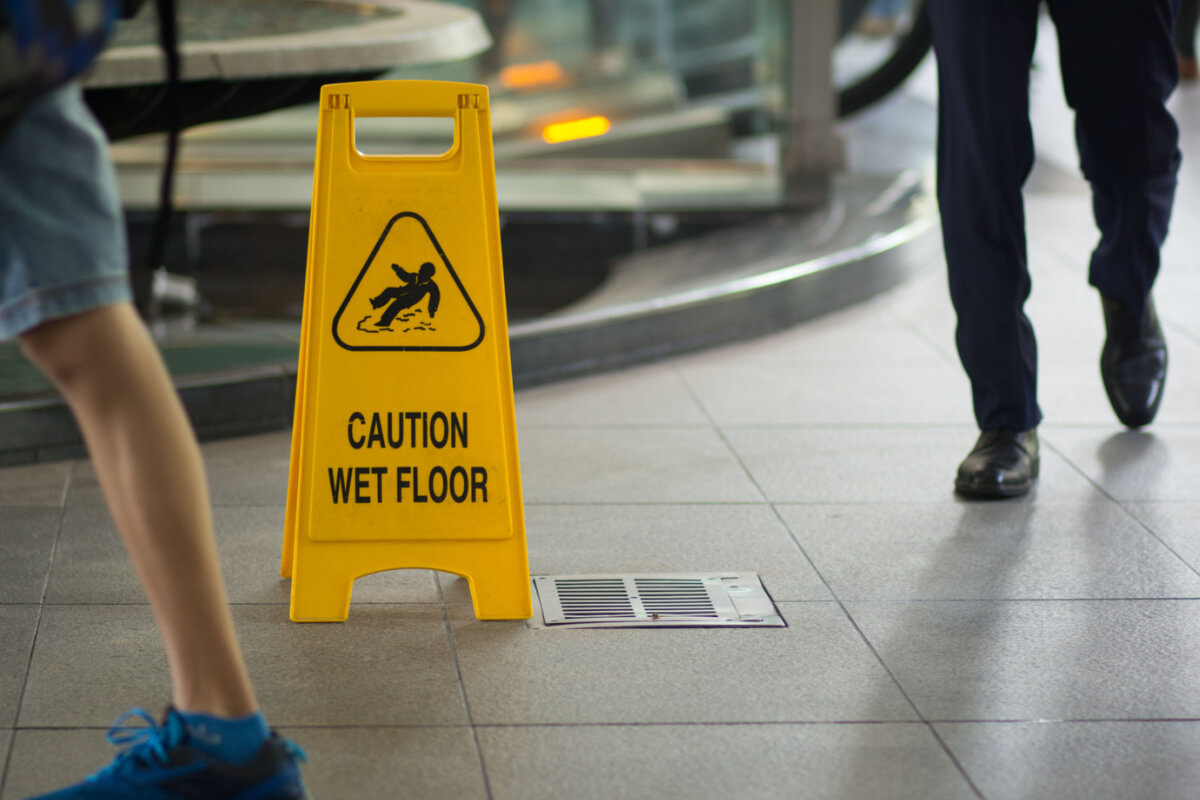- Firm Overview
- Practice Areas
- Testimonials
- Community
- Blog
- FAQ
- Contact
GET A FREE CONSULTATION (702) 680-1111

A 38-year woman in Las Vegas was awarded $13 million for damages caused by a fall at Lowes Home Center when she visited the stores in 2013. Unfortunately, she fractured her skull and lost her senses of taste and smell from the resulting brain damage. The court also heard that she developed balance issues, chronic headaches, and increased anxiety from the fall.
While this incident at Lowes is certainly alarming, it’s not an isolated case. Las Vegas, with its bustling casinos and establishments, has seen its fair share of slip and fall accidents. In fact, there’s a whole category of incidents that have occurred in various locations, highlighting the importance of maintaining safe premises for visitors.
Kelly Hendrickson, a mother of three, had gone to check on palm trees that were grown in the garden improvement center at Lowes when she slipped on a slimy substance that was draining from some planters at the edge of the pathway and hit the front of her head.
Her lawyers argued that the company was negligent for keeping the paths wet and the yellow cone warning sign was not visible at the time of the fall. In the final judgment, the court found Lowes to be 80% responsible for the fall and awarded the $13 million. The 20% was comparative negligence on her part for not taking reasonable care. Therefore, the jury did not award punitive damages of $40 million asked by the plaintiff.
According to the National Flooring Safety Institute, about eight million people rush to the ER after a fall. Slip and fall accidents make up 12% of these. This means that about a million people are treated for slip and fall injuries each year.
Some slip-and-fall cases can result in a lawsuit. However, in order to pursue a claim successfully, the victim must demonstrate that another party should be held accountable for the fall. This is what is called proving negligence and can be done in various ways.
One word that is prevalent in slip and fall cases is ‘reasonable.’ In this case, the court wants to know if the defendant acted in a reasonable manner to mitigate the likelihood of the accident or the injuries that resulted from it. This is critical to maximizing the amount of compensation that the court can award the victim.
Suppose the plaintiff can prove that the victim did not take reasonable care. For example, if they did not mind their steps when walking up the stairs or walked fast on a wet surface where there was a sign warning them of the same, the court may deny compensation or determine that the defendant contributed to the accident. Such is the case that is discussed above.
On the other hand, if the defendant can prove that the property owner or occupier did not take reasonable care and this led to the accident, there is a high chance that the claim may be awarded. Inability to take reasonable care includes not warning visitors of the impending risk, failing to remove the hazard, or not closing off sections of the property where some work that presents a threat to other users is being carried out where possible.
Was there any indication that there was a hazard at the location of the accident? For example, if a wet floor caused the slip and fall with water pooling, was there a sign that brought other property users’ attention to the impending danger? Did the signs tell them what to do to mitigate the risk?
For example, if water or oil has pooled in a sector of the corridor, a sign can tell the users to use an alternate corridor or walk carefully. However, if there was no such sign or if one was present but not legible or clear, this can be proof of negligence. The law does not assume that the victim will be aware of the hazard and know what to do to keep out of danger.
In the same breath, the victim can prove that the defendant ought to have used a way to reduce the risk. For example, they may have installed a light where the lighting was poor, put adequate warning signs, or closed off the given area. However, if the party at fault did not mitigate the possible risk, they can be held negligent.
In risky areas, such as workshops and companies that deal with elements that may cause slip and fall accidents, there is a routine checkup at a specified duration as part of the Occupational Safety and Health (OSH) Act. The act requires companies to create a procedure for dealing with hazards that occur in the course of working and mitigate possible injury. Inspections are meant to determine the presence of a hazard and rectify the issue as soon as possible.
However, if the person who was supposed to inspect the area failed to perform their duty or if those who were tasked with dealing with the hazard failed to do their work, it is possible to sue for damages after the accident.
The duty of care lies with the property owner, as it is their obligation to ensure that the visitors to the property are free from any known dangers. However, the same duty of care can also be extended to the occupier of the building. The owner of the house is held liable if they fail to remove hazards that lie within their legal responsibilities, and the same is true for the occupiers.
For example, if a roof has been leaking, causing the corridor below to be wet, the property owner may be held liable. However, if the occupier spills water and fails to dry it up, they will be liable for the accident. The plaintiff must prove that the defendant had legal responsibility for their safety. Workers can use state work injury laws to sue a negligent employer.
Finally, the victim must prove that the defendant should have seen the likelihood of harm from their action or inaction. The court also needs to know if the injury resulted in compensable losses and costs. Victims can use one more compelling piece of evidence to prove negligence.
If you are involved in a slip and fall accident, call 702-680-1111 or contact our experienced legal team today, and we will work to get the compensation you deserve.

As founder of Gina Corena & Associates, she is dedicated to fighting for the rights of the people who suffer life-changing personal injuries in car, truck and motorcycle accidents as well as other types of personal injury. Gina feels fortunate to serve the Nevada community and hold wrongdoers accountable for their harm to her clients.